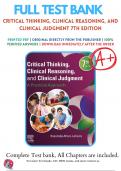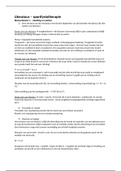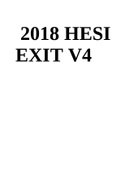Exam (elaborations)
Test Bank For Critical Thinking Clinical Reasoning and Clinical Judgment 7th Edition A Practical Approach By Rosalinda Alfaro-LeFevre ( ) / 9780323581257 / Chapter 1-7 / Complete Questions and Answers A+
Boost Your Exam Prep with the 7th Edition Test Bank for Critical Thinking Clinical Reasoning and Clinical Judgment by Rosalinda Alfaro-LeFevre. Instantly access printable PDF questions and answers for Chapters 1-7. Elevate your nursing studies with original content from the publisher. Get ready to ...
[Show more]






